Wednesday, September 10, 2014
Shooting the Bird(s) and Fresh Seafood, Iceland Style!
Today, we’re gonna get rowdy and SHOOT THE BIRDS. A lot of birds. Then for a nice on-board fresh seafood buffet like you’ve never been to before. Did I say “fresh”? Oh, baby!
Our ride for the day:
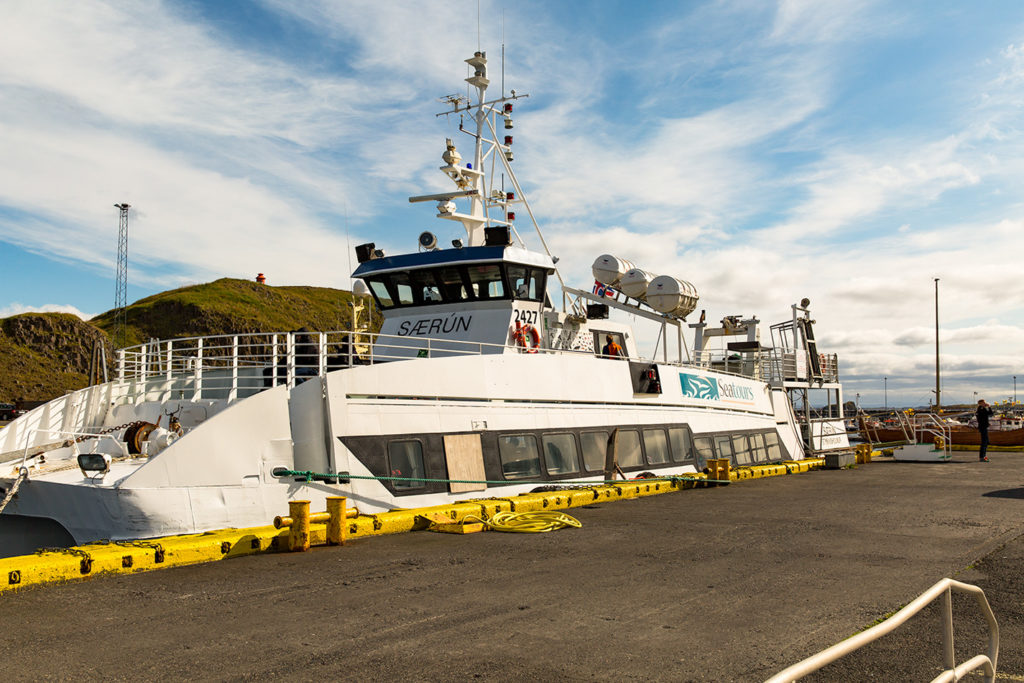
The Saerun – Das Boot
I was so busy exploring and shooting some pics that I didn’t even notice the plywood covering one of the windows! And now that I look a bit closer, she’s got a few minor dents in her hull, too. Had I noticed this before cast-off, I might have had a few second thoughts. Nyahh. They’ve probably got some life jackets. I hope.
Bird hunting along the rocky cliffs…
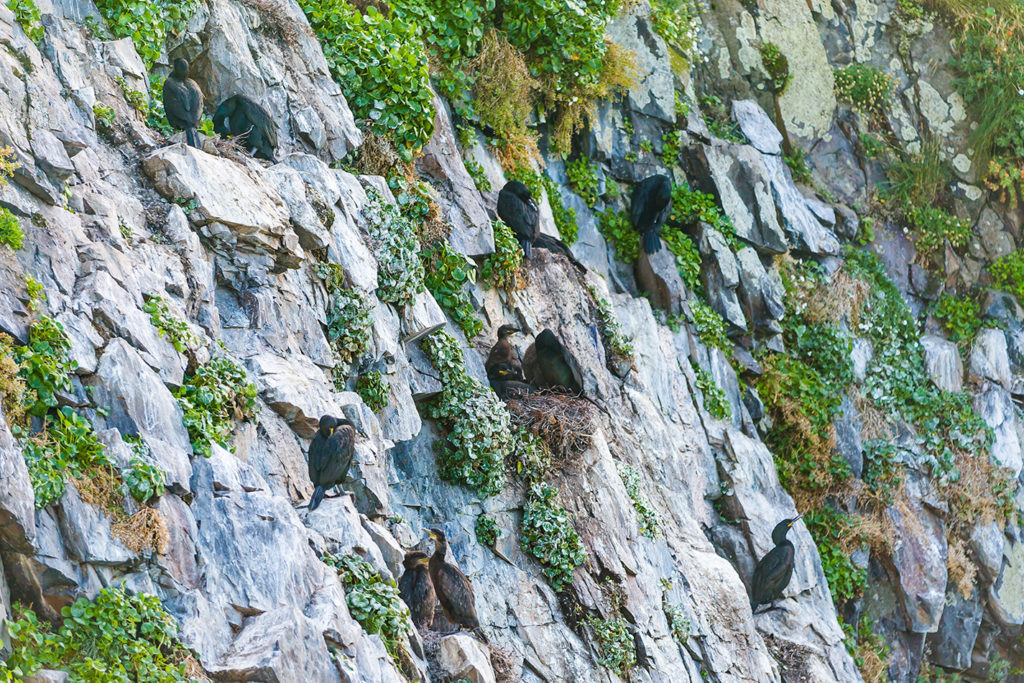
This cliff face was just full of nesting shags.
As long as I was in Iceland, I wanted to shoot some birds. The pic above is what all those folks with camera-phones and inexpensive point-n-shoots will probably get to look at upon their return home. Interesting? Yep. Pretty? Yep, again. But I wanted to be able to see them a bit more up close and personal. So…
…I packed my camera gear and lugged it most of the way across the world. I was really glad that I made the effort, because I got to see those beautiful avians mostly “up close and personal”… Hope you enjoy these bird shots as much as I do.
First, The Shags:
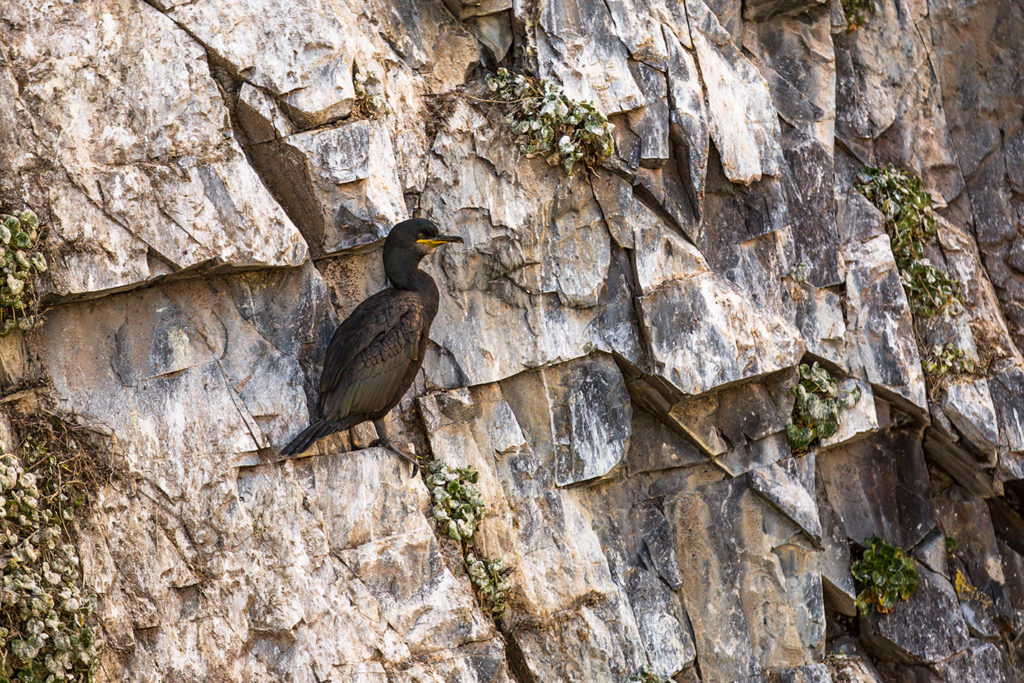
The European shag, or common shag (Phalacrocorax aristotelis) is a species of cormorant. It is distinguished from the great cormorant by its smaller size, lighter build, thinner yellowish bill, and in breeding adults by the crest and metallic blue and green-tinged sheen on the feathers.
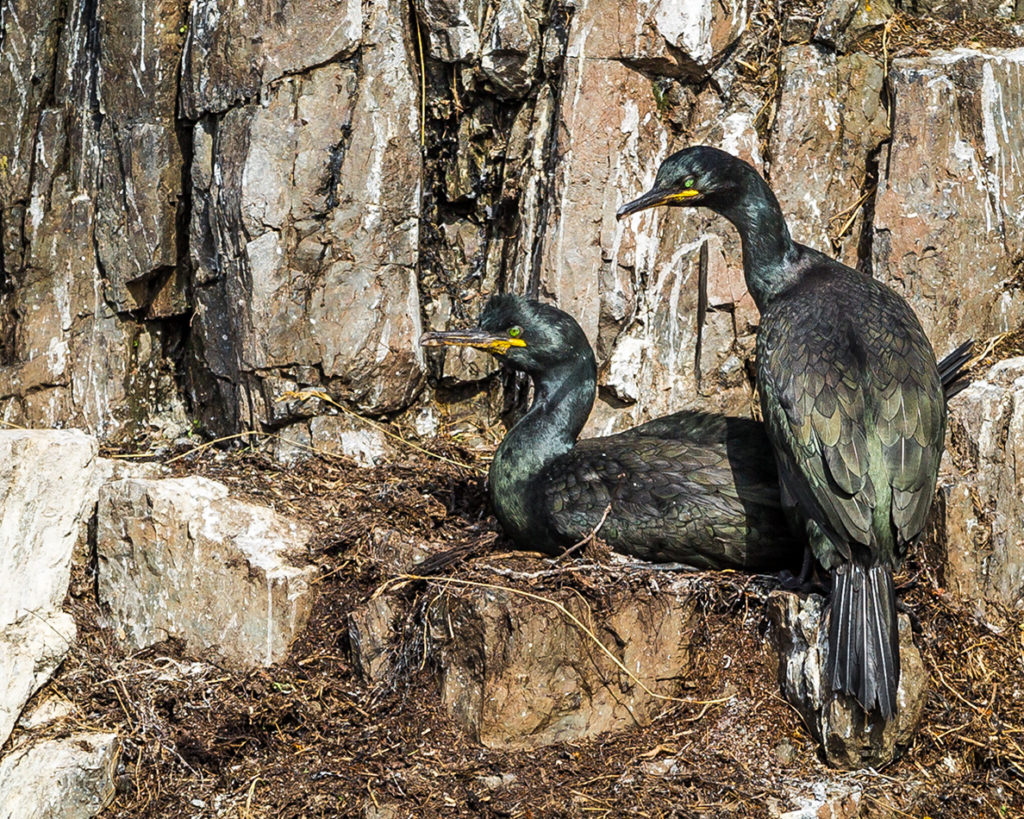
The European shag is one of the deepest divers among the cormorant family. Shags have been shown to dive to around 45 meters (148 ft). When they dive, they jump out of the water first to give extra oomph to the dive. European shags are preponderantly benthic feeders**, i.e. they find their prey on the sea bottom. They will eat a wide range of fish but their commonest prey is the sand eel.
** Like politicians.
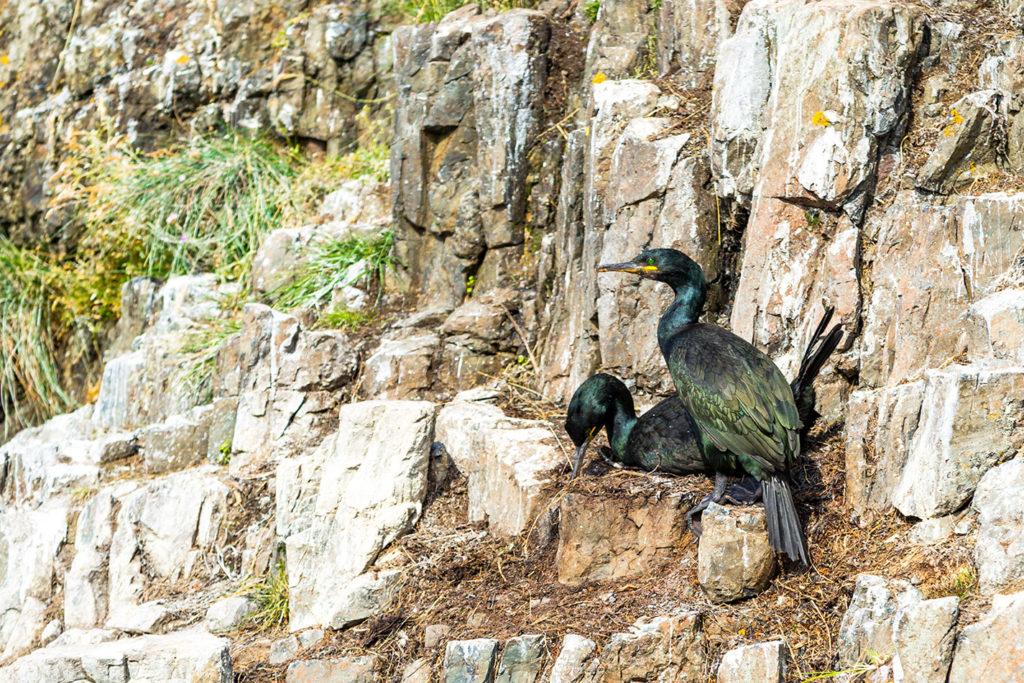
The Good News – It breeds on coasts, nesting on rocky ledges or in crevices or small caves.
The Bad News – Their nests are terrible looking (and smelling) heaps of rotting seaweed or twigs cemented together by the bird’s own guano.
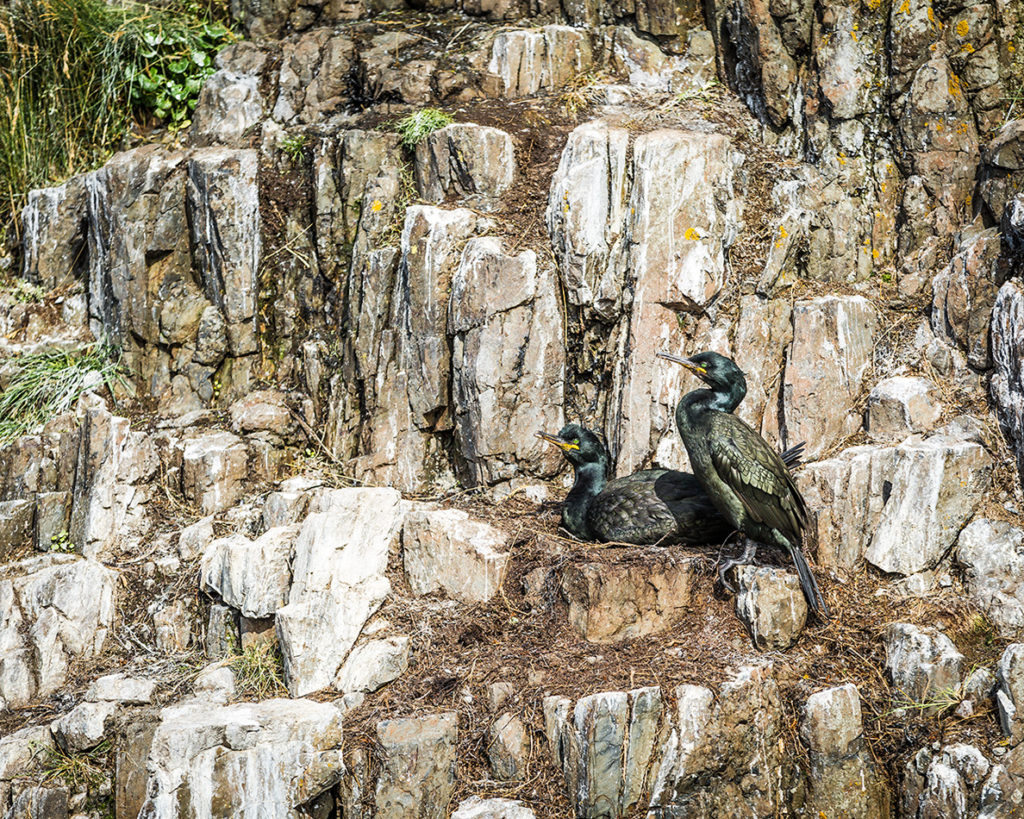
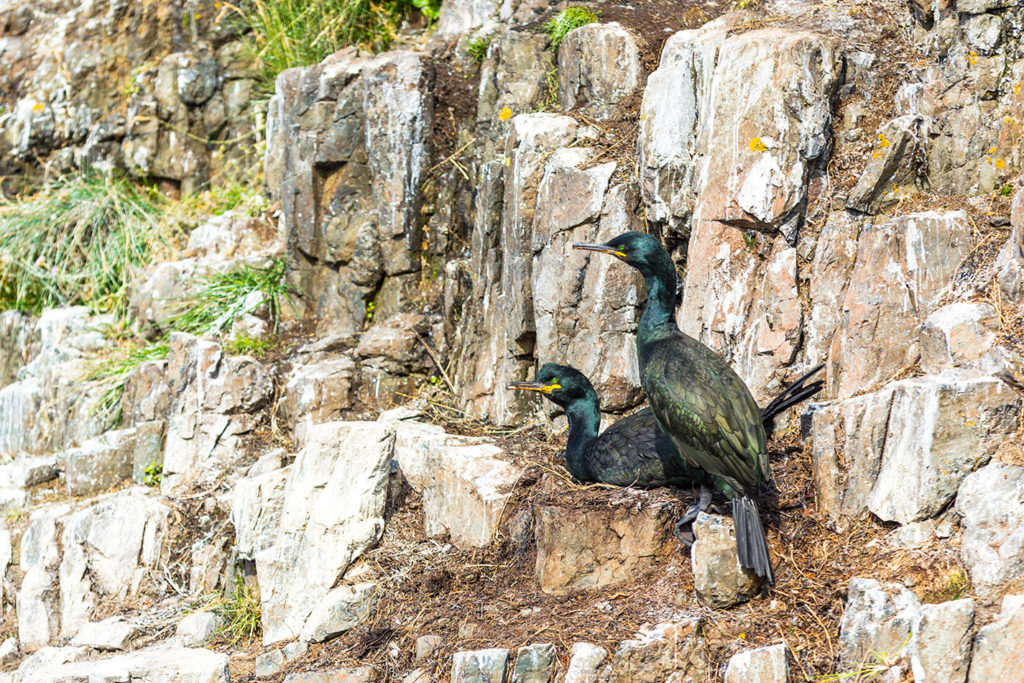
This next bird has guano (aka: poop, birdshit, etc) all over it’s back from those damned upstairs neighbors who just don’t seem to care.
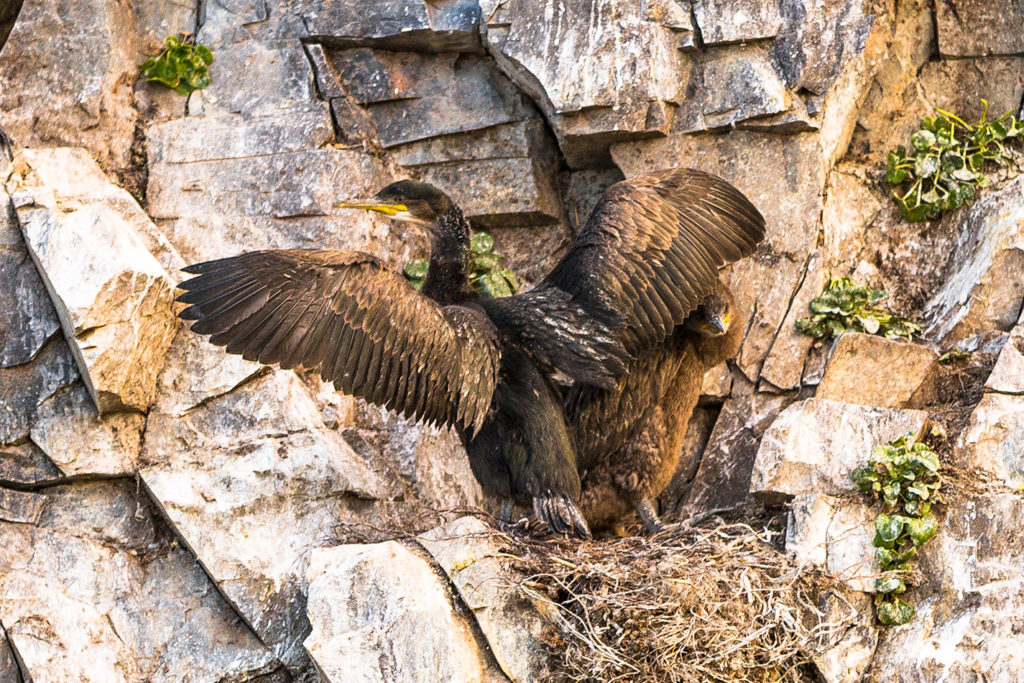
This chick was born naked. No feathers, no down, nada. It’s taken (probably) about two or three months for it to get this fuzzy and fluffy, and is almost ready for fledging.
Next, The Kittiwakes:
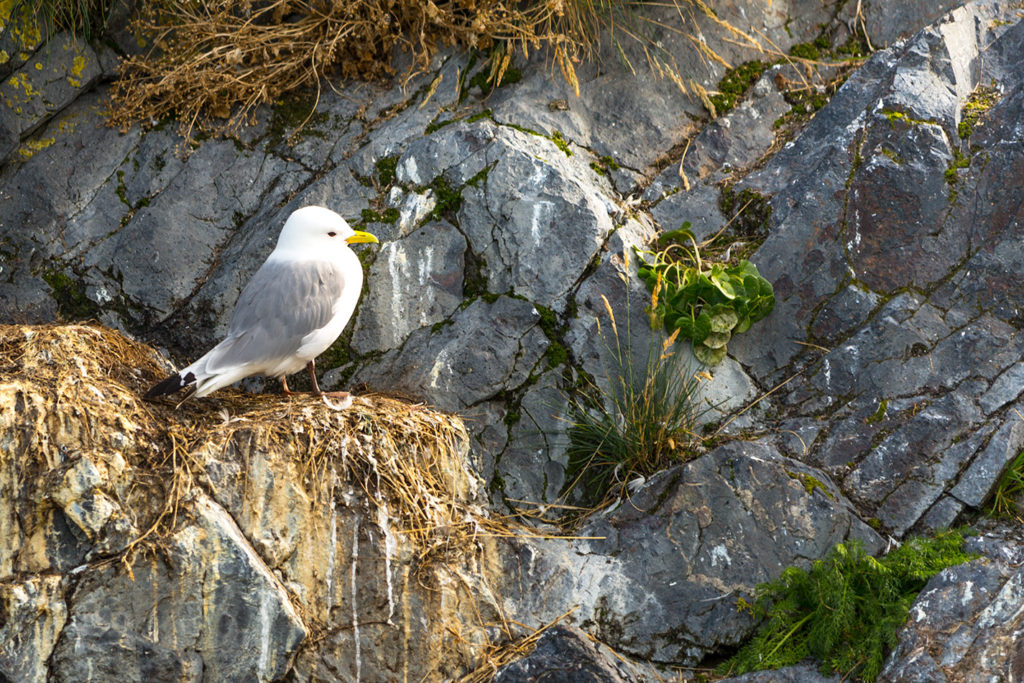
Black Legged Kittiwake
This is a pretty little bird although, like the shags, it’s not overly mindful about sanitation around the house… And like the shags, these birds build their nests on rocky cliffs over the water out of… yep. S.O.S. Seaweed, twigs and grass, and… bird cr@p.
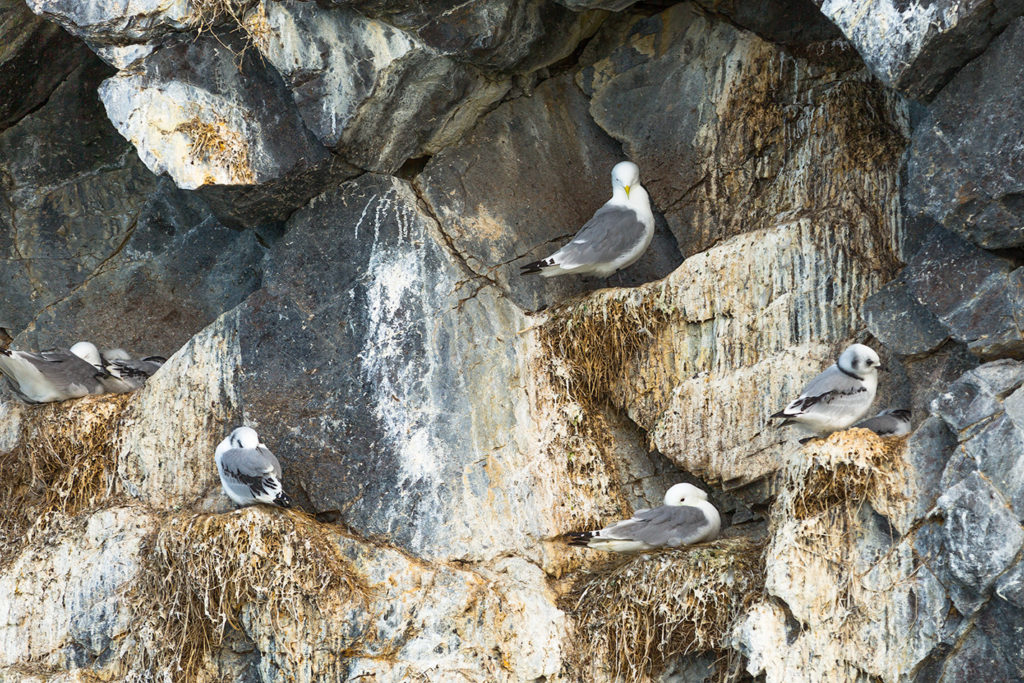
Time for a Kittiwake Siesta
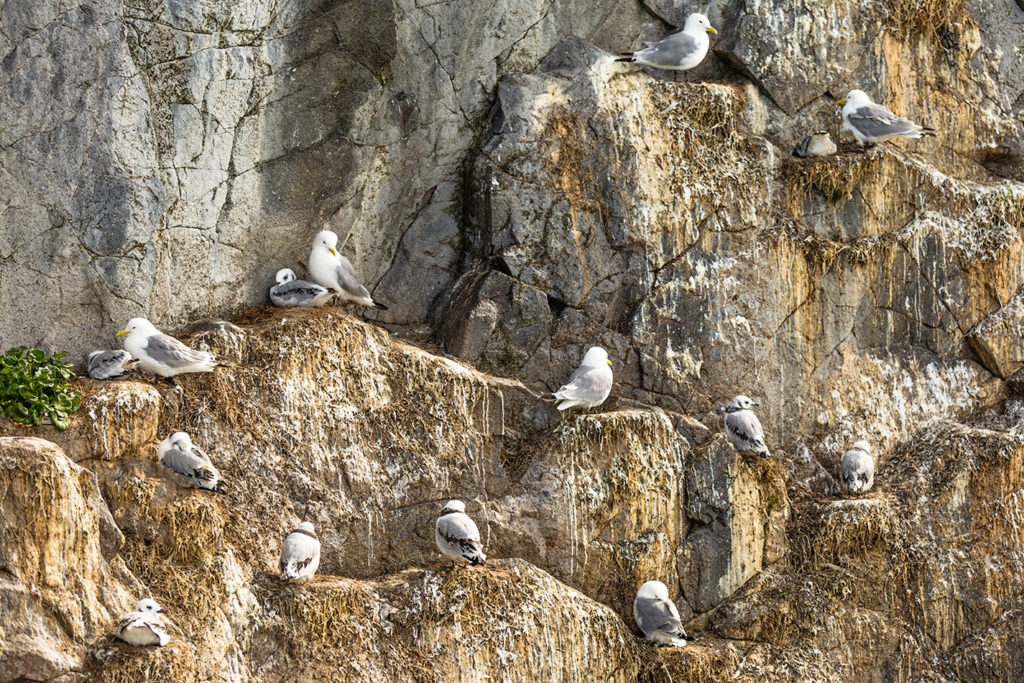
Apartment living, Icelandic Kittiwake Style
Third, the Fulmar:
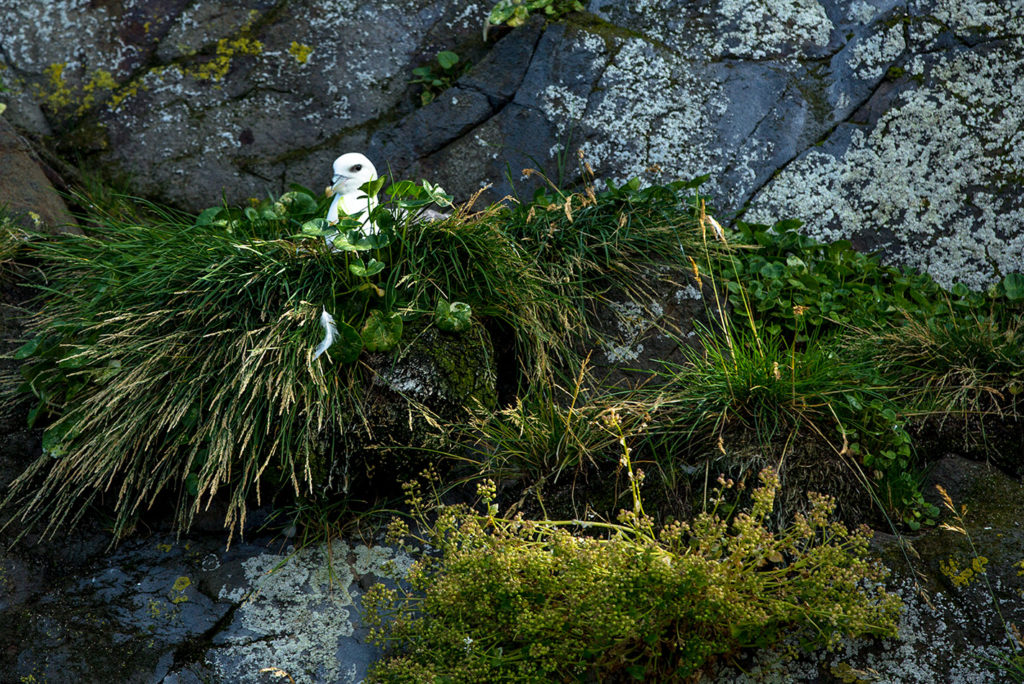
Northern fulmar (Fulmarus glacialis)
Although the fulmar reminds me of a gull with granny glasses, it’s really more like the petrels we watched in Antarctica. And to a certain extent… to the salt-water iguanas we got to see in the Galapagos Islands on another adventure. These birds spend a substantial amount of time at sea slurping up plankton, tiny crustaceans, and tiny fish near the surface. One can imagine the volume of salt water that they ingest! They retain much of the H2O systemically, and use their “de-salinization” glands in their beaks to spit the concentrated salt (and some water) out these tubes on top of their beaks.
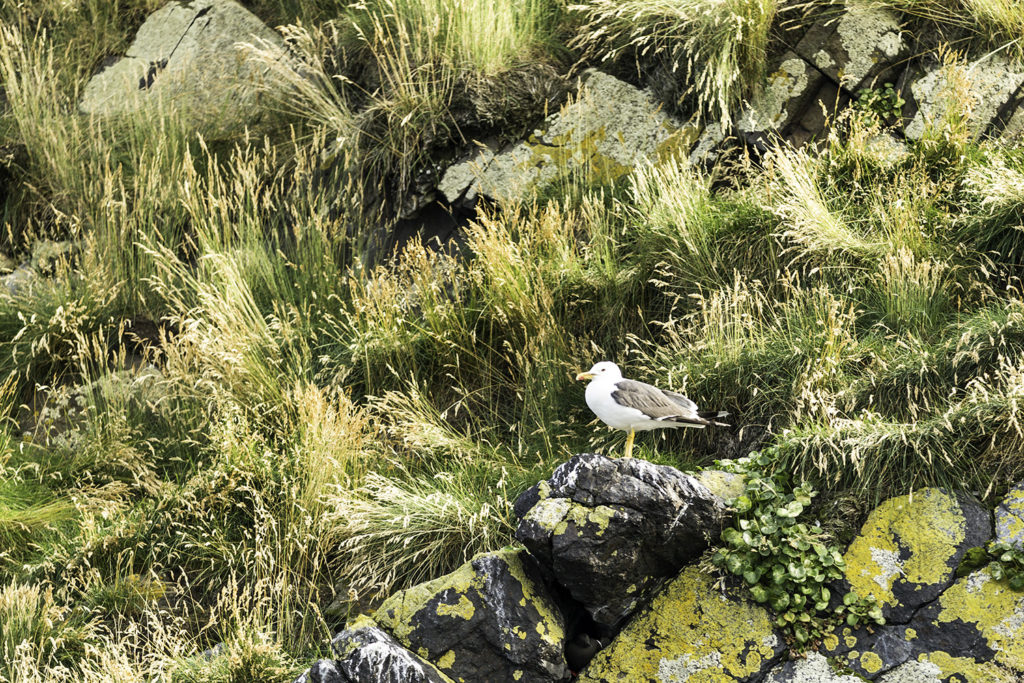
I believe that these birds generally mate for life. And since the perfectly shat-upon cliff dwelling is so hard to find and get fixed-up just right, many times a pair will split up… one stays home and guards that perfect “Home-Sweet-Home”, while the other goes out to sea for a grocery trip. Then they switch roles. Cool, huh?
Fourth, The Puffins:
And now to “shoot” some of those cute little Puffins (with my Canon, of course). I love these cute little birds. With that highly specialized and colourful beak, they’re sometimes called Sea Parrots.
Click here for a neat little movie clip about puffins from National Geographic
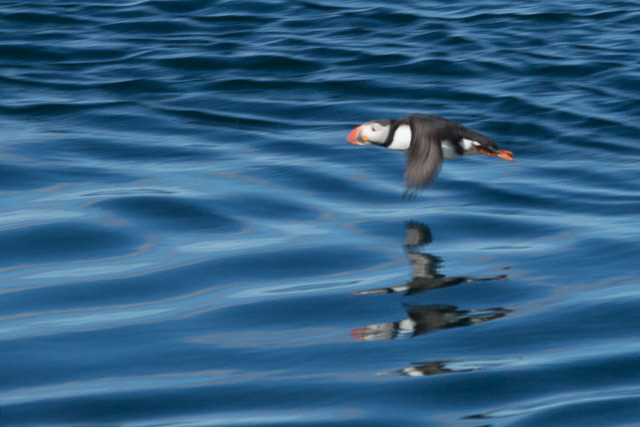
55 mph, flat-out, just above the surface in ground effect
The range of the Puffin includes the whole North Atlantic, including Iceland which has one of the world’s largest colonies. They lead a rather solitary life during the fall and all winter, living alone on the surface of the North Atlantic just bobbing around, swimming, feasting, and sleeping. They’re excellent swimmers, and use their stubby little wings (a “compromise sized wing” for swimming or flying) to dive down up to 60 meters in search of herring or sand eels (Mmmm sand eels, their fave). Once airbourne, if flying, the little speedsters are fast, 55mph, but not terribly maneuverable. While at sea, they usually “land” by crashing head-long into a wave crest. While on land, they usually attempt a belly flop, but end up… well, End-Over-End.
Thinking back, if I’d had to crash land somewhere after Every take-off… I probably wouldn’t have become a pilot.
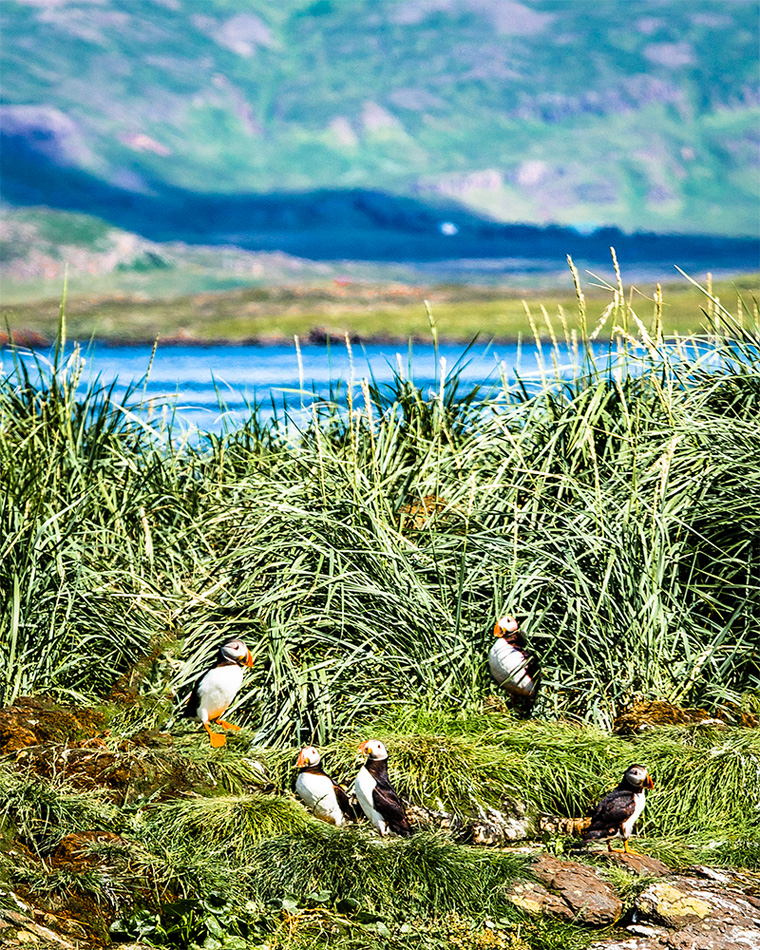
Puffins land on North Atlantic seacoasts and islands to form breeding colonies each spring and summer, where they live in burrows. Suites, actually. Many have two chambers, one for pooping, and another lined with grass and feathers for nesting and breeding, incubating their single egg, and hopefully, raising their single chick.
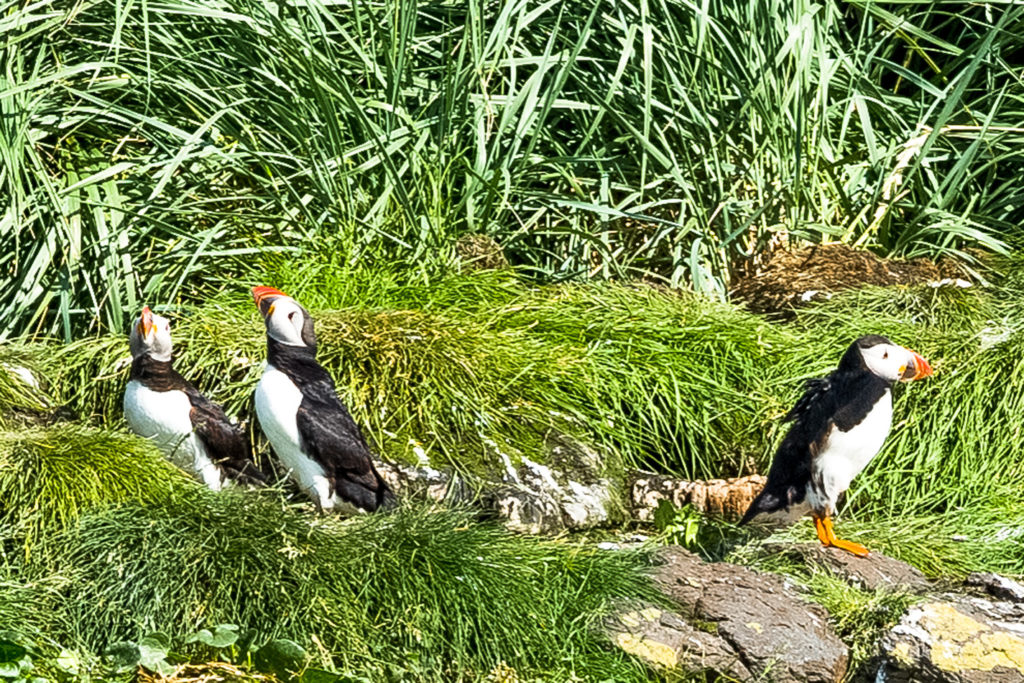
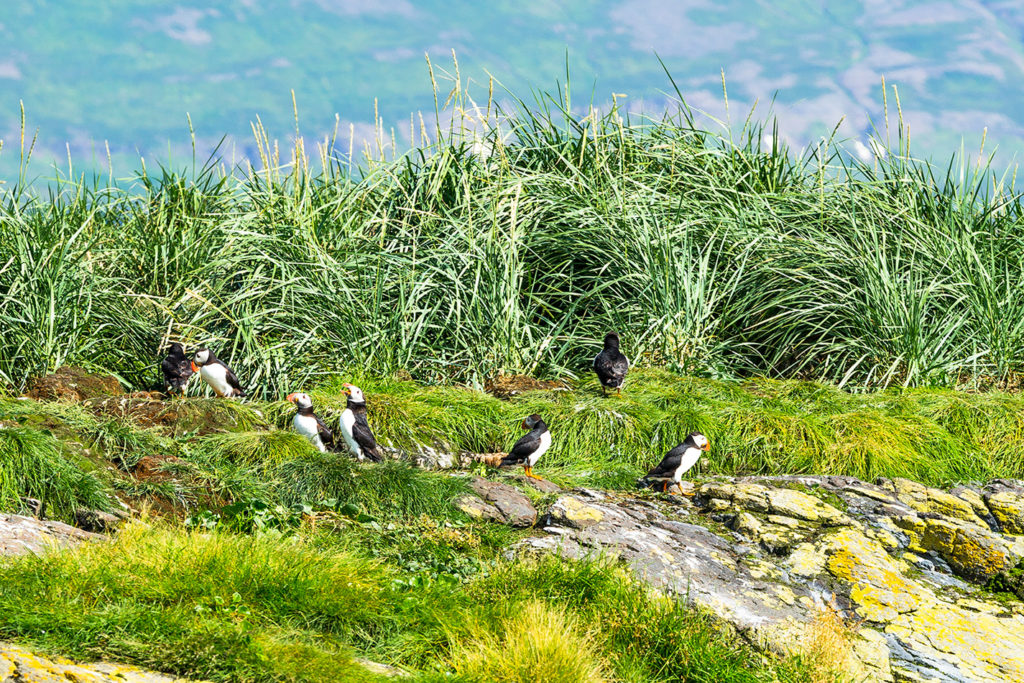
Puffin couples often reunite at the same burrow site each year. It is unclear how these birds navigate back to their home grounds. They may use visual reference points, smells, sounds, the Earth’s magnetic fields—or perhaps even the stars.
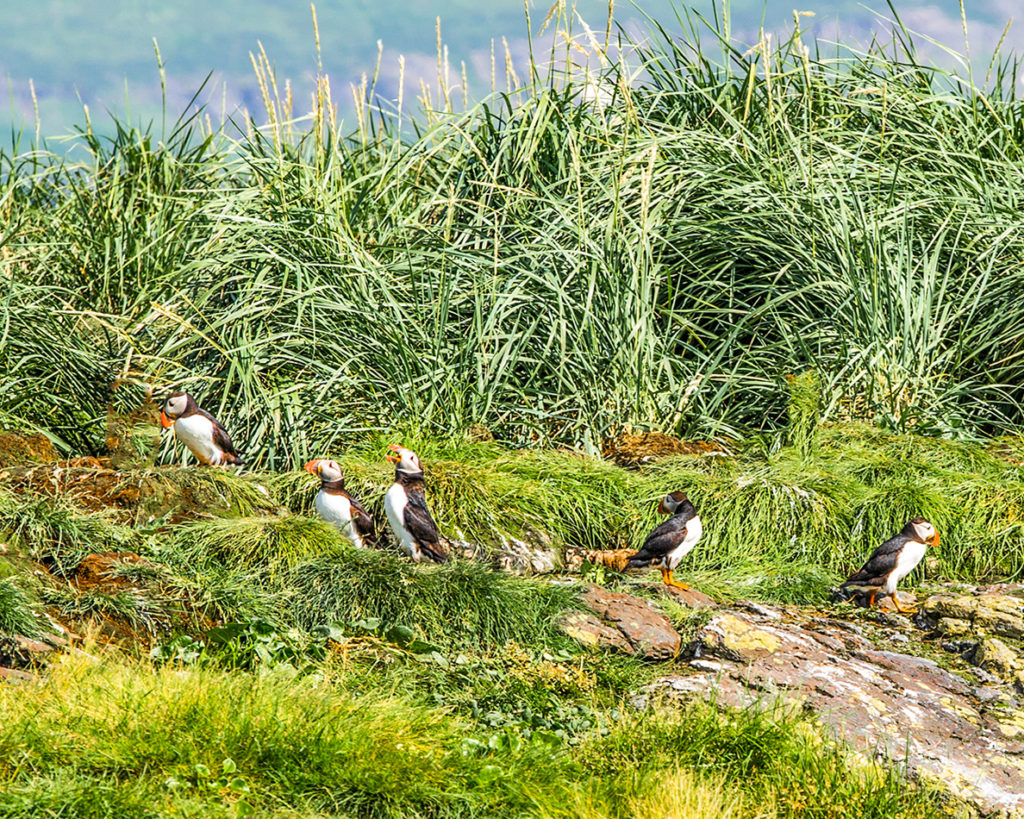
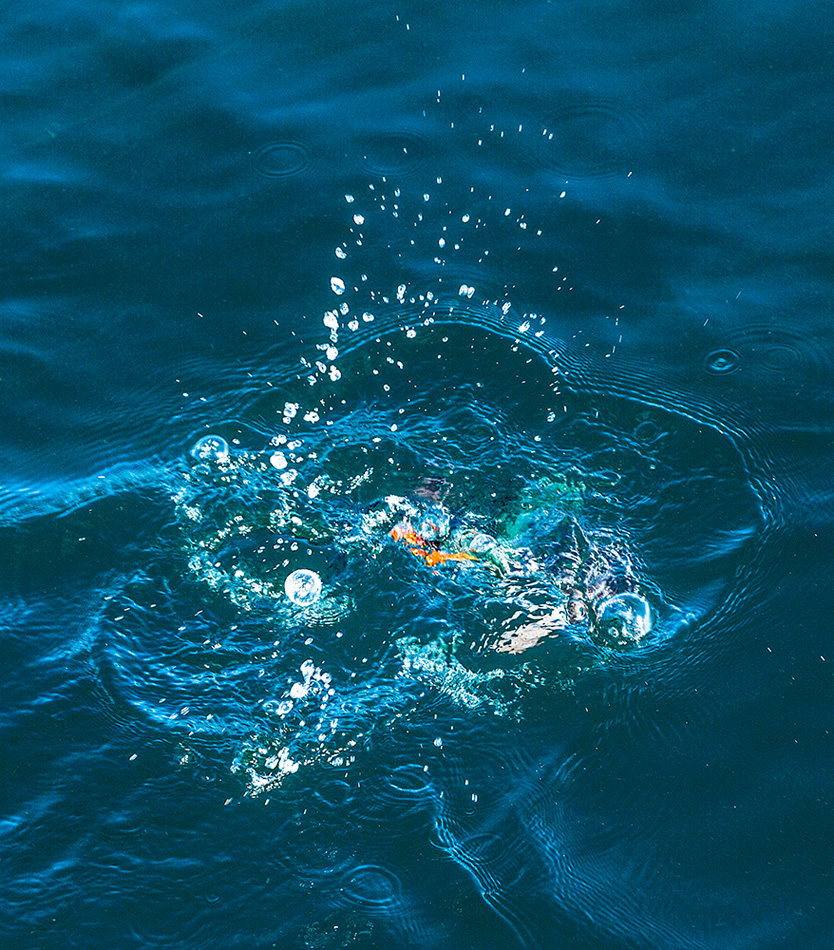
Bath Time
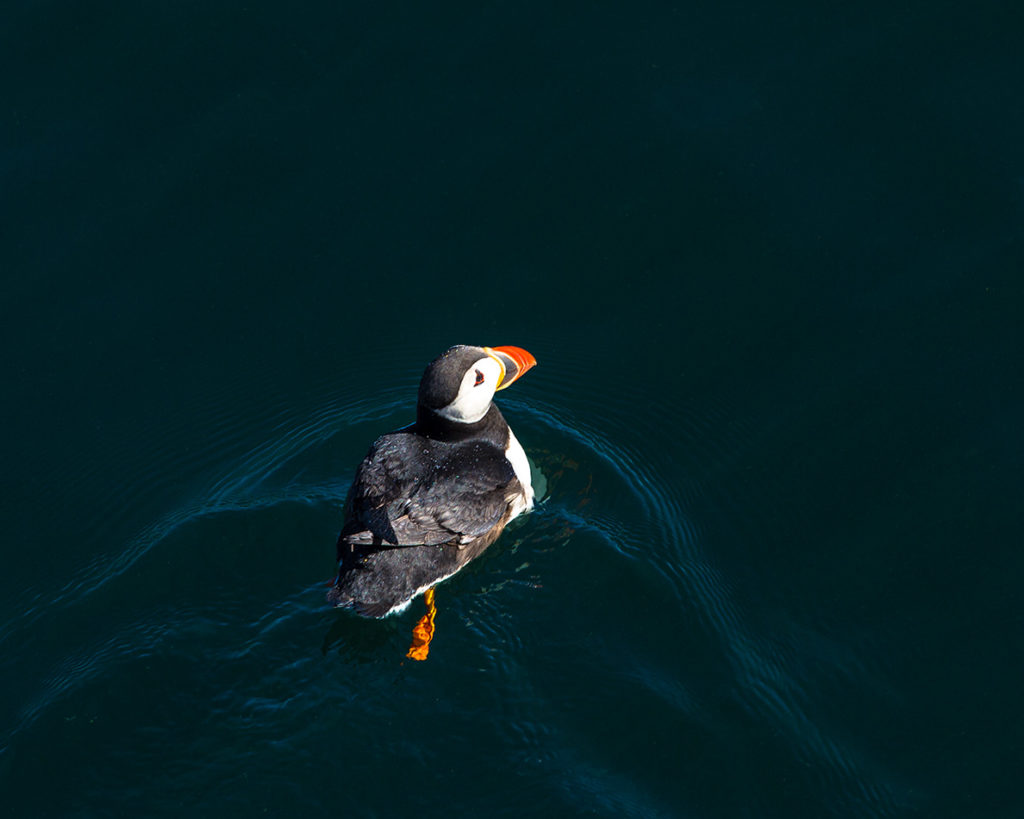
Ahhh, I always feel so much better after a brisk, refreshing bath.
Seafood !
And now, for something to eat:
After an exhausting day of bird shooting, Icelandic Style with my camera, it’s time to re-stoke the fires behind my belt buckle. I’m Hungry for some fresh seafood!
All you can eat seafood store
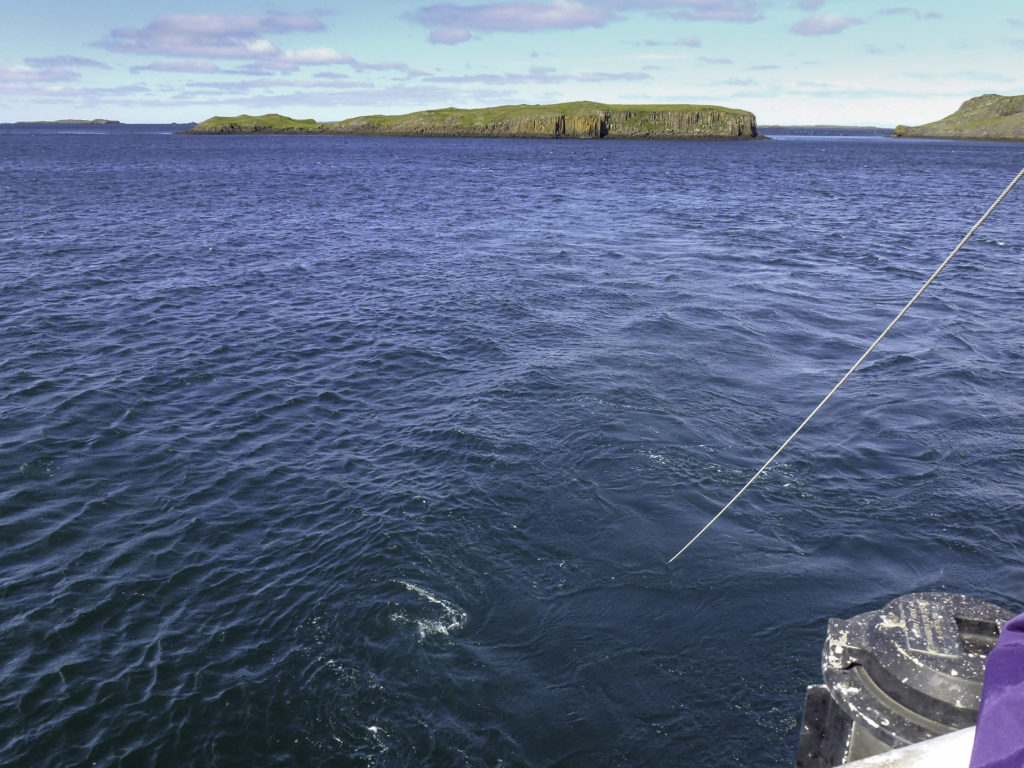
Oh, look. The waiter has just placed our order…
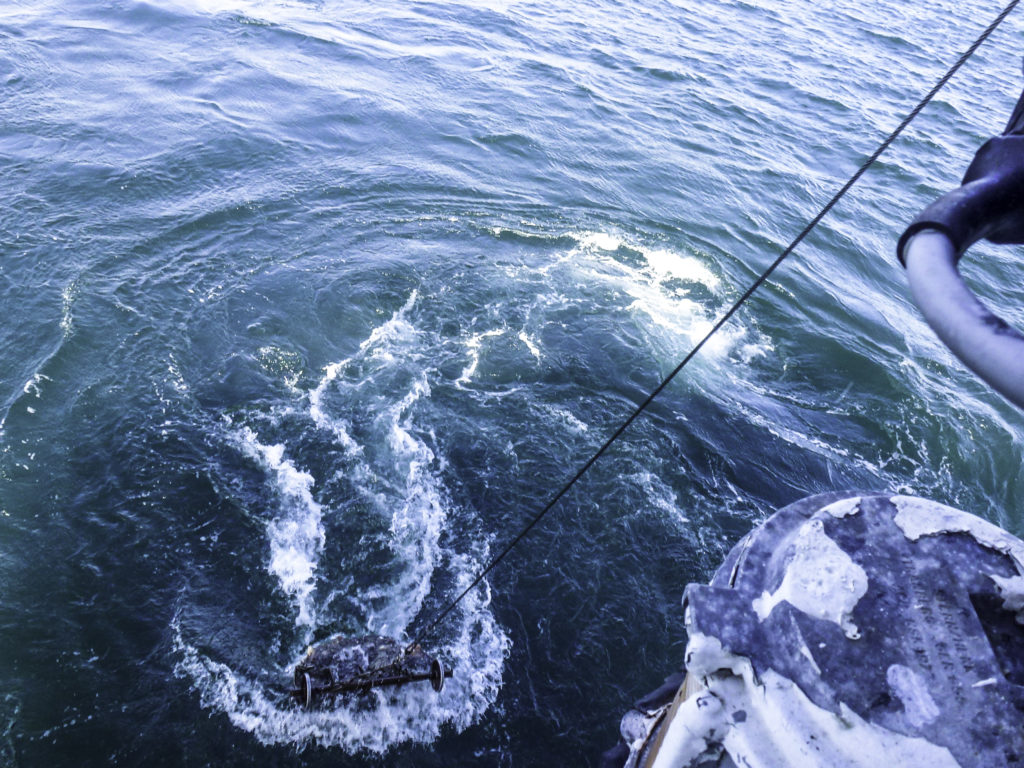
…and Wow, it’s almost ready, now.
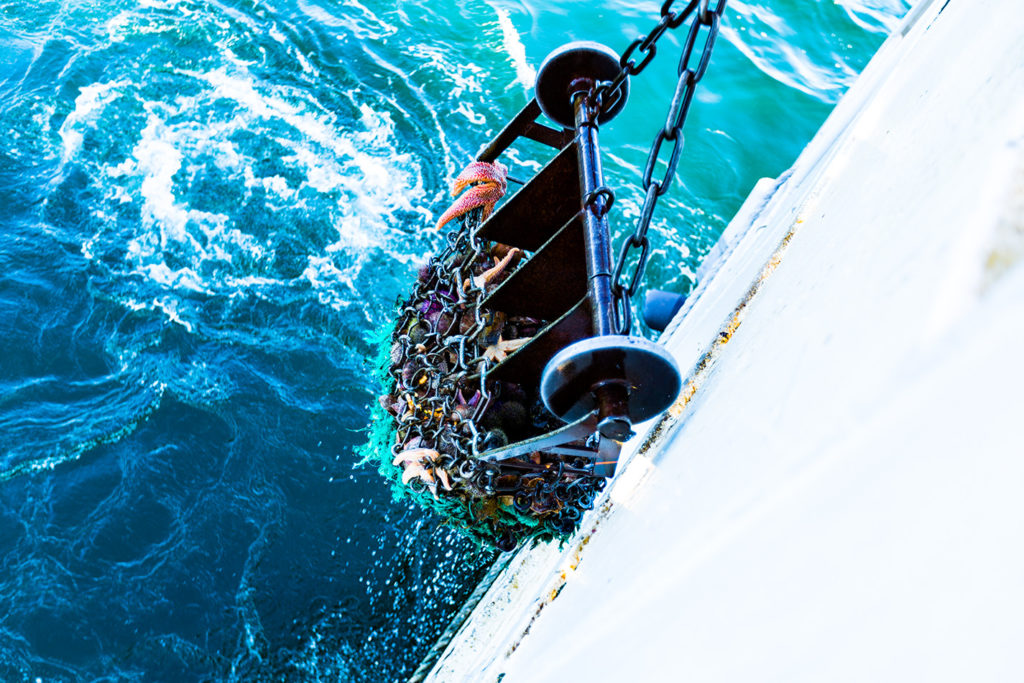
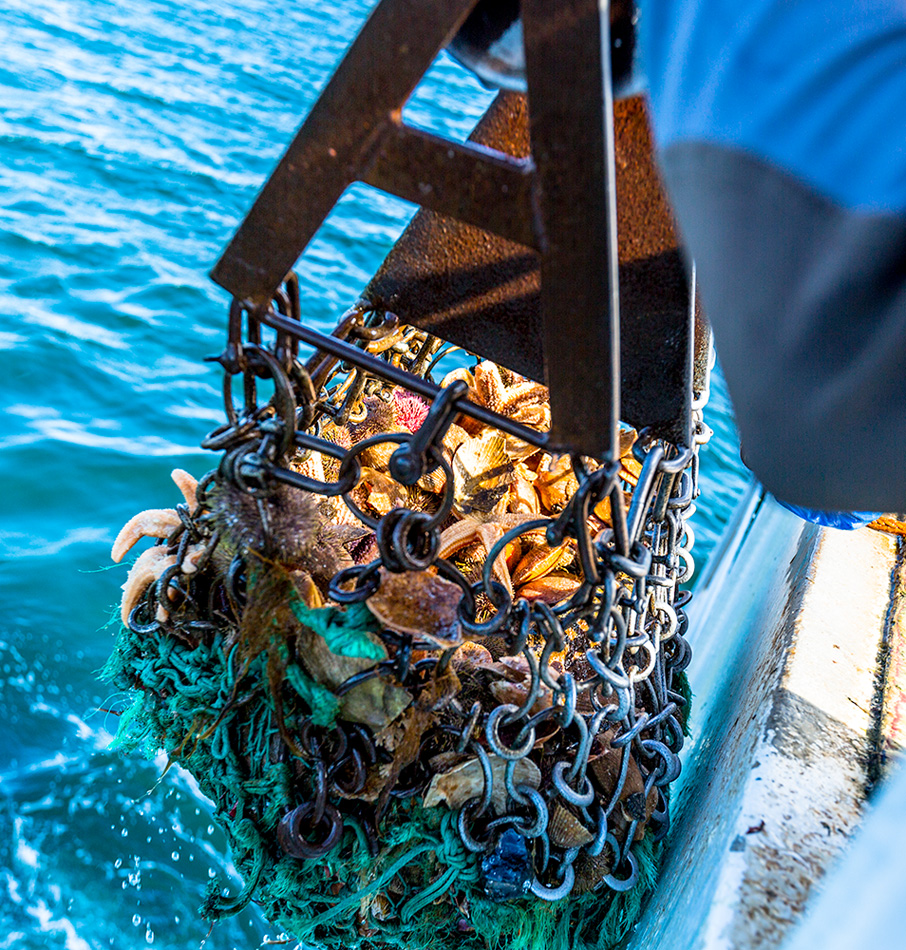
Yes, yes, that’s exactly what we ordered.
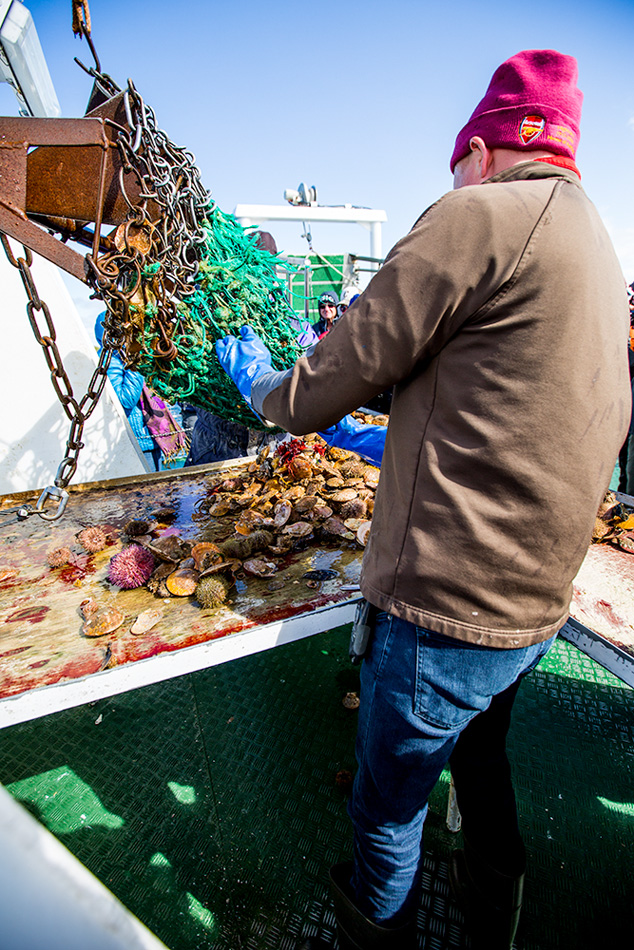
A brief wait while our order was “processed”, and voilà…
Dinner’s almost ready!
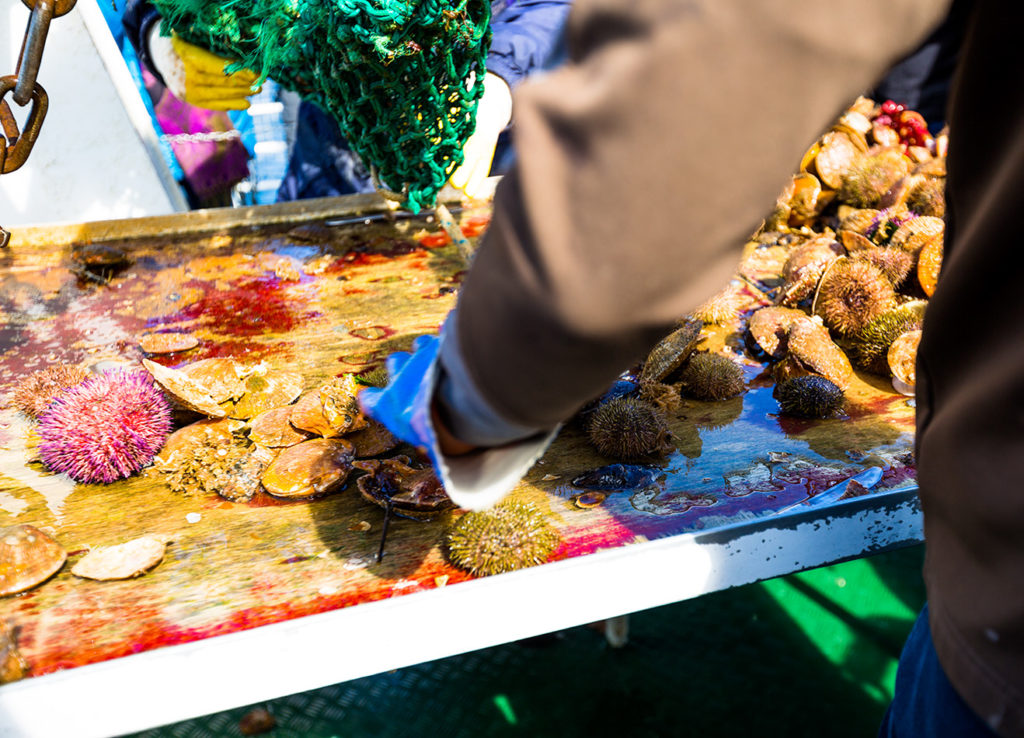
Dump it onto the table boys and girls, the “crew” is becoming restless…
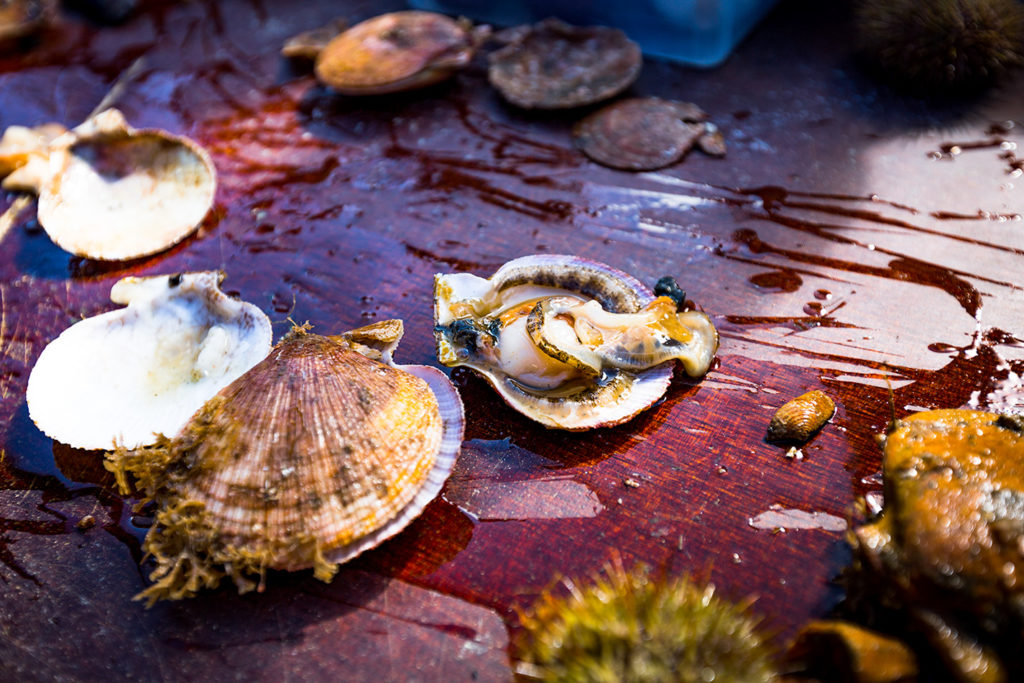
Surely that cute little 16 y/o girl isn’t gonna gut this thing! Eeewww!
Then one-half of a second and two flicks of a sharp blade, and
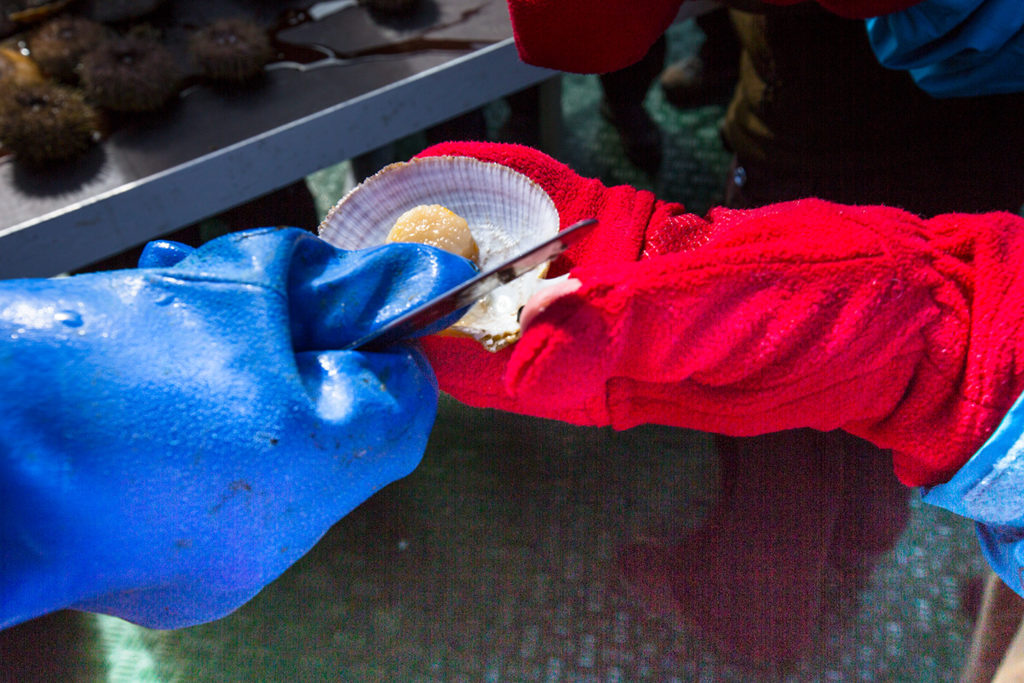
This is the result. Fresh. Seafood. With a teeny bit of sal from la Mer….
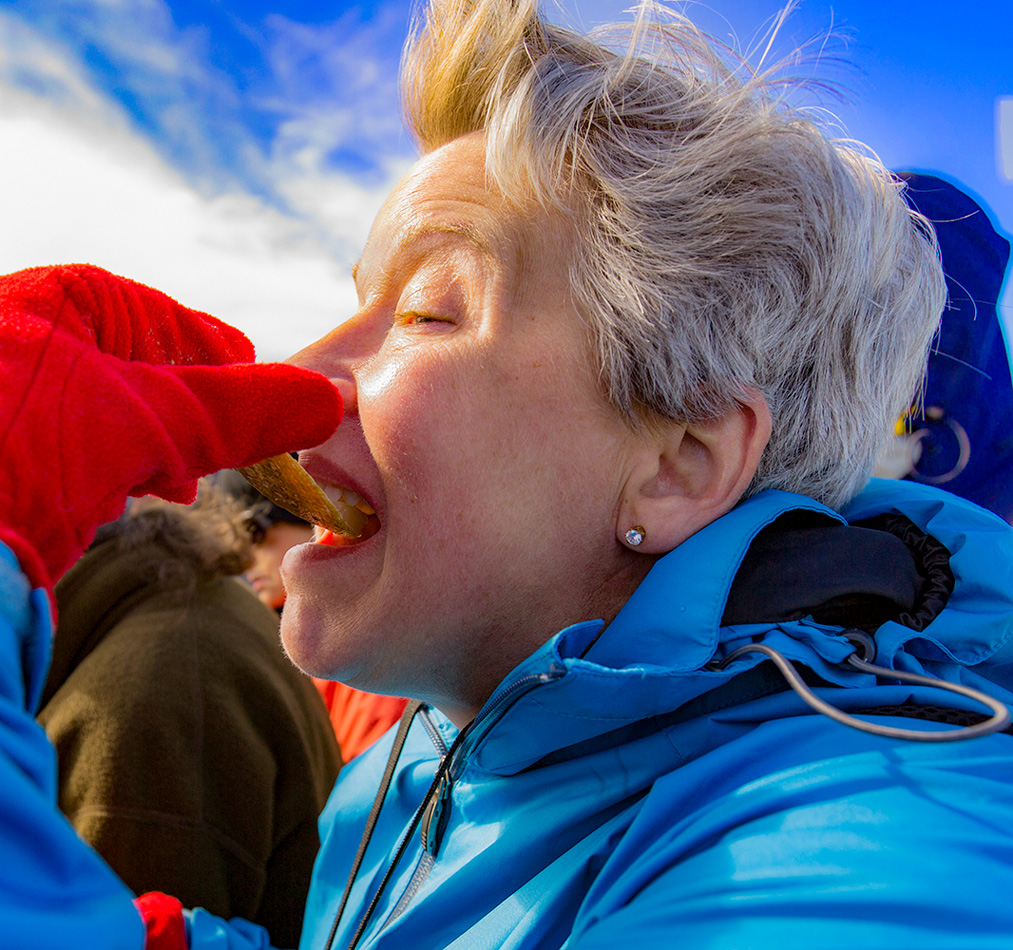
Winnie ! ! !
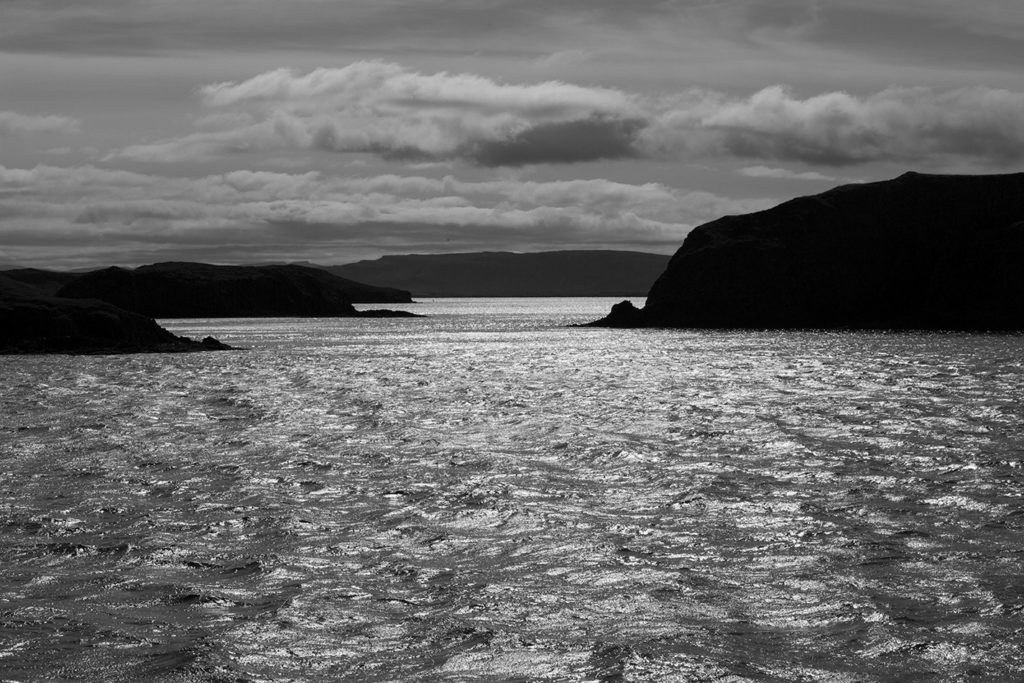
and good night for now.
